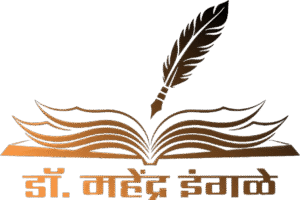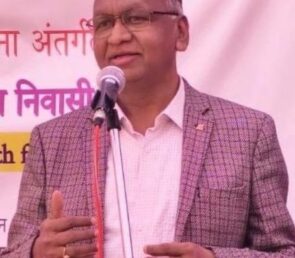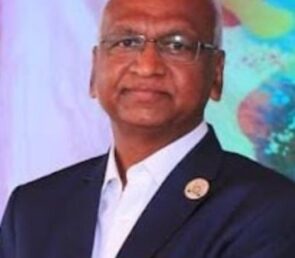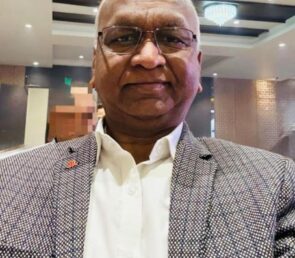
Decision Making by Intuition
Date : July 18, 2025 By
Every year, on 15th September, we celebrate Engineers’ Day in honor of Bharat Ratna Sir Mokshagundam Visvesvaraya, a visionary engineer whose contributions shaped modern India.
In 2012, I was invited as a speaker at SSBT College of Engineering, Jalgaon by Professor Hussain, the Head of the Civil Engineering Department.
Professor Hussain is deeply knowledgeable, and equally passionate about spiritual philosophies. Tao was his favourite philosopher, and his reflections on life and wisdom always sparked profound conversations.
As we discussed my lecture topic, he encouraged me to choose something beyond the conventional themes of Engineers’ Day. I agreed, but at the time, no particular subject came to mind.
During that period, I was working as a Training and Placement Officer at Government Polytechnic, Jalgaon. For two or three days, I pondered over possible topics, letting ideas swirl in my mind. Then, suddenly-one particular thought flashed before me: “Decision Making by Intuition.”
This idea felt so instinctive, almost as if it had chosen me rather than the other way around. I immediately called my assistant, Yashvant Agnihotri, and asked him to note down key points for my lecture. Without referring to any external material, I dictated my lecture based on intuition. Once completed, I asked him to get it typed and prepare slides for a Power Point presentation.
This experience led me to a deeper reflection on decision making, especially in situations where traditional methods fail.
There are various decision-making models. Structured problem solving follows a systematic approach:
1. Define the problem in clear terms.
2. Gather relevant data and information.
3. Analyse the data to understand the context.
4. Generate possible alternatives for solving the problem.
5. Evaluate each alternative methodically.
6. Eliminate options based on feasibility and impact.
7. Select the best possible alternative and implement it.
This rational approach is widely used in business, governance, and policy making. UPSC students study Simpson’s Model for their examinations.
Yet, a fundamental question struck me: What happens when there is no precedent, and when no historical data exists to guide the decision? This situation arises when leaders, especially those in top positions have to. make decisions with far reaching consequences, shaping history, nations, or industries.
President Truman’s Unprecedented Decision:
One example that came to mind was President Harry S. Truman’s decision during World War II. As the war reached a critical juncture, America faced the monumental challenge of stopping Germany and Japan at any cost. Truman had to make an unprecedented and fateful decision, to launch a nuclear attack on Hiroshima and Nagasaki. Although estimations existed regarding the human and material losses, the exact repercussions of the nuclear bomb were unknown. It was an event unlike anything in history. Certainly, Truman would have consulted statesmen, scientists, social scientists, and military advisors, weighing the pros and cons of the attack. Yet, ultimately, he had to make the decision on his own.
His situation reminded me of a powerful thought expressed by renowned Marathi writer G. A. Kulkarni in his allegorical story ‘Kanchanmrug’: “A person is always alone when making a momentous decision.” This statement resonated deeply with me because it captures the loneliness of leadership.
लोकव्यवहारापासूनअलिप्तअसलेले, गूढव्यक्तिमत्वाचे, प्रतिभावानवप्रथितयशलेखकजीएकुलकर्णीयांच्याकांचनमृगयाअंतर्मुखकरणाऱ्यारुपककथेतील, ‘कोणताहीउत्पातनिर्णयघेतांनामाणूसएकाकीचअसतो ‘ हेवाक्य, माझ्यास्वतःच्याअनुभवाशीनिगडितअसल्यानेमलाफारआवडते.
While reviewing existing models, I realized that all rational models rely on data. But what about situations where data does not exist? What about disasters like the atomic plant explosions in Japan, where decisions had to be made without precedent?
Through my reflections, I formulated a new structured model, one that does not depend on experience, gut feeling, or historical patterns. Instead, it taps into the subconscious mind, integrating intuition with clarity.
Key Principles of the Intuitive Model
The decision maker owns absolute responsibility without regret. The consequences are faced without blaming anyone.
2. Remaining calm, centered, and emotionally stable is essential for clarity. Anxiety leads to impulsivity. Only a composed mind can activate the subconscious effectively.
3. The subconscious mind, integrated with intuition, processes hidden insights beyond logical analysis.
The Intuitive Decision Making Process:
1. Before sleeping, sit quietly, reflect deeply, and pray for guidance regarding the decision.
2. Allow your subconscious mind to process the problem overnight.
3. Keep paper and pencil near your bedside.
4. The moment you wake up, write down the first thought regarding the decision.
5. This insight comes from deep subconscious processing, free from external influences.
6. Trust the clarity of the subconscious revelation.
7. Make the decision without hesitation and without regret.
Why Is This Approach So Crucial?
History has shown that many leaders suffered immense psychological distress while making monumental decisions. Some, unable to bear the weight, succumbed to mental agony or ended their own lives.
For those in high stakes leadership positions, whether a Prime Minister deciding on war, a Chief Justice delivering a landmark verdict, or a Military Commander strategizing critical operations, mental tranquility is essential.
Final Thoughts:
When history has no answers, when data fails, and when the decision could change the course of the future, intuitive decision making provides clarity without regret.
By integrating structured reflection, subconscious processing, and absolute responsibility, this model offers a new way to navigate uncertainty.
Dr. Mahendra Ingale, Former Principal
Pune, April 20, 2025



